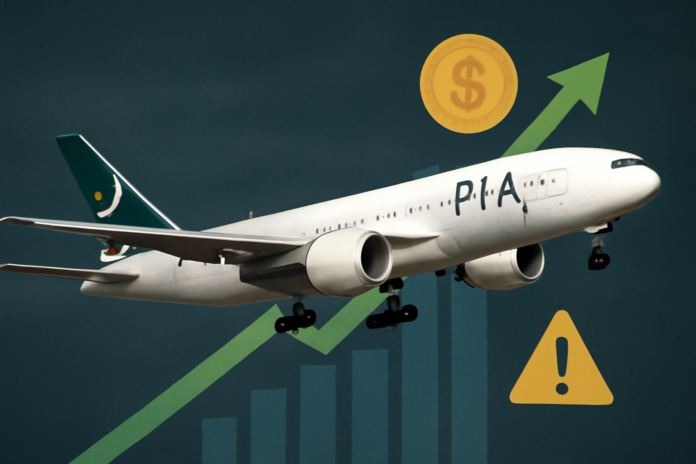The recent results released by Pakistan International Airline (PIA) and the jubilation around its profitability seems to have taken everyone by surprise. The profits announced for the year ended December 2024 show that operating profits registered around Rs9.4 billion while net profit was recorded at Rs26.2 billion. The earning per share of Rs5.01 per share seems to be a far cry from just a year ago when the company had a loss of Rs104 billion at the end of 2023 coming to around a loss of Rs20 per share.
The sudden turnaround in the fortunes can be attributed to certain efficiencies being put into place, however, a closer look at the consolidated accounts show that the company is still in need of further steps before it can be labelled as becoming profitable.
The recent history of the company dampens some of the optimism that surrounds the release of the accounts. The loss seen in 2023 was not a one time blip as the airline had been suffering losses for 21 years. The last time PIA was able to record a profit was back in 2004 when it recorded profit after tax of Rs2.3 billion. Since then, there has been a consistent slope downwards as losses of more than Rs600 billion were recorded from 2005 to 2024.The recent results show signs of a turnaround but these are just signs and the complete turnaround is yet to be seen.
So why all the confetti and commotion? The content in this publication is expensive to produce. But unlike other journalistic outfits, business publications have to cover the very organizations that directly give them advertisements. Hence, this large source of revenue, which is the lifeblood of other media houses, is severely compromised on account of Profit’s no-compromise policy when it comes to our reporting. No wonder, Profit has lost multiple ad deals, worth tens of millions of rupees, due to stories that held big businesses to account. Hence, for our work to continue unfettered, it must be supported by discerning readers who know the value of quality business journalism, not just for the economy but for the society as a whole.To read the full article, subscribe and support independent business journalism in Pakistan









